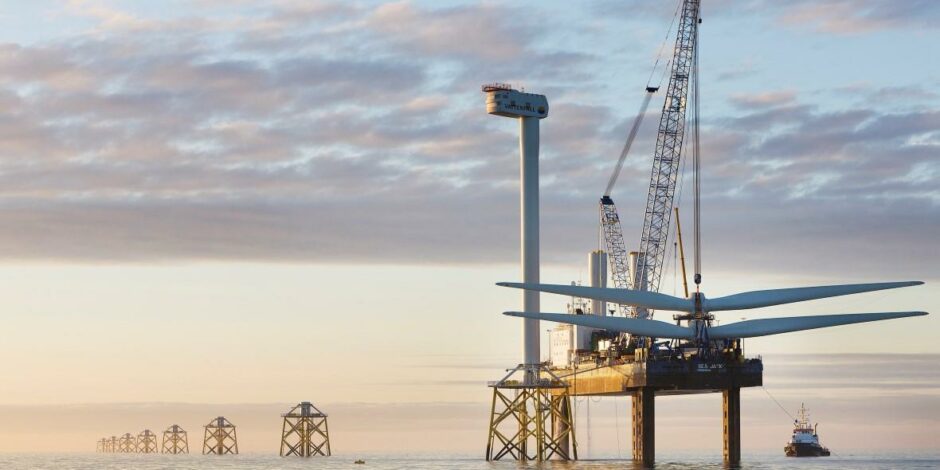
Oilfield services companies have shown considerable resilience in the wake of the pandemic, but mergers and acquisitions (M&A) activity will increasingly be guided by investors’ ESG appetite, Subsea Expo delegates heard.
Speaking in a Subsea Expo session that encompassed forecasts for the subsea sector from technical, financial and legal perspectives, Mike Beveridge, vice chairman of corporate finance for energy and power at Piper Sandler, described how M&A activity will be critical in reshaping the energy services industry as it transitions.
He noted that despite a significant loss of value from the industry in recent years, exacerbated by the pandemic, the sector was now in “reasonable health”.
Pointing to the likes of Baker Hughes and Schlumberger, Mr Beveridge noted: “These are big organisations that suffered catastrophic falls in value through the downturn accelerated because of COVID, but the recovery is coming.”
It comes as attendees heard earlier in the day that a surging Blue Economy is expected to grow be worth $3 trillion globally by 2030.
Increasingly oilfield and subsea services providers are targeting this market, through a variety of strategies ranging from dedicated renewables spin-off units – for example, Subsea 7’s dedicated Seaway 7 unit – through to integrated multi-company “alliances,” such as OneSubsea.
In turn, the strategies behind each of these may appeal to a variety investors.
He grouped these investors into three broad camps. The first he dubbed “contrarians” – those who would invest in pure-play oil and gas services despite the clear headwinds of doing so. The second, he called “pragmatists”- those who could see the importance of oil and gas services but want access to some energy transition opportunities.
Finally, he described “new energy evangelists” who would only be interested in pure-play clean energy services.
In the case of the latter, he said these investors were “often are willing to pay very, very high premiums to access businesses with that exposure.”
M&A outlook
Mr Beveridge added that the M&A market had been fairly quiet during 2020 as companies negotiated the direct impacts of COVID-19. The deals that were done, he said, were very much those that had to be done out of necessity or opportunity – pointing to the likes of Aker Solutions’ acquisition of Kvaerner.
Geographically, he said the Middle East remains the area of most interest for sector investors, owing to ongoing market certainty and attractive field economics, adding that Norway was second, thanks to clear direction and ongoing policy support from government.
Meanwhile, Mr Beveridge said there had been diminished private equity interest in the services and subsea sectors, partly because past efforts had generated the desired returns but also because environmental and social governance (ESG) factors were now primary considerations for many investments.
“ESG agendas are dominating thinking in our industry, as they are everywhere else, and have led to suppressed valuations,” he added, adding that other consolidations meant there was a more limited buyer pool than before.
The tension between these elements was echoed by the session’s chairman, Burness Paull head of energy, Bob Ruddiman, who noted the need for both communities to appreciate the demands of the other.
“The current investment climate needs to recognise the criticality of the industry but also the industry needs to embrace the whole of ESG,” he said. “It’s a challenge that I think we can rise to, but the rhetoric and the reality must match up.”
Offshore wind: the new subsea?
Looking ahead, Mr Beveridge added that offshore wind – floating wind in particular – presented a major opportunity for both investors and service companies to align as the sector heads for “dramatic growth” – particularly in the wake of schemes such as ScotWind.
“I think that of all the sectors I’m involved with, offshore wind is the one that stands out as being the most interesting in the new energy space,” he added.
“Offshore wind today, it strikes me as being at the same point in its journey as subsea oil and gas was in the year 2000.
“When investors looked at the opportunity in early 2000s, they saw [a growth curve] and they invested in our sector because they wanted exposure to a high-growth, 15-year industry.”
That level of growth is leading to the emergence of offshore wind as its own recognised investment sector, enabling investors to tailor their exposure – potentially down to specific services such as turbine manufacturing, maintenance services or supply vessels.
Nevertheless, Mr Beveridge concluded that the synergies between oil and gas and subsea expertise and the burgeoning renewables markets would mean a continued place for oilfield services companies as they transition.
“Oil and gas services business – multi-billion-dollar global giants with phenomenal resources, strong balance sheets, great technical skills, great engineering – these are the energy services companies of tomorrow,” he said.
Recommended for you
